#aluminium spaceframe
Text



Fiat Zicster Concept, 1996. Presented at the Geneva Motor Show, a prototype electric car with an aluminium spaceframe and composite panels to reduce weight to 850kg including all batteries. The car had a top speed of 100km/h and a range of 230km at a constant 50km/h.
#Fiat#Fiat Zicster#concept#prototype#EV#electric car#design study#lightweight#1996#Geneva Motor Show#1990s#aluminium spaceframe
169 notes
·
View notes
Photo

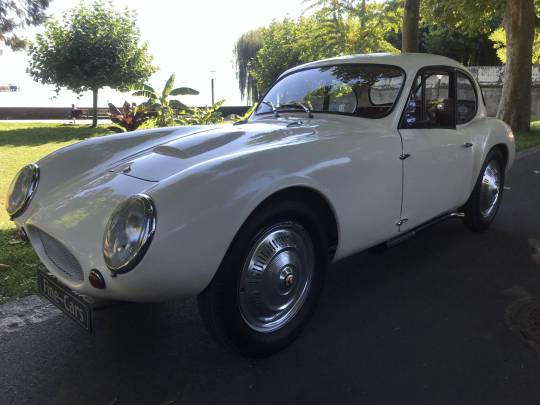





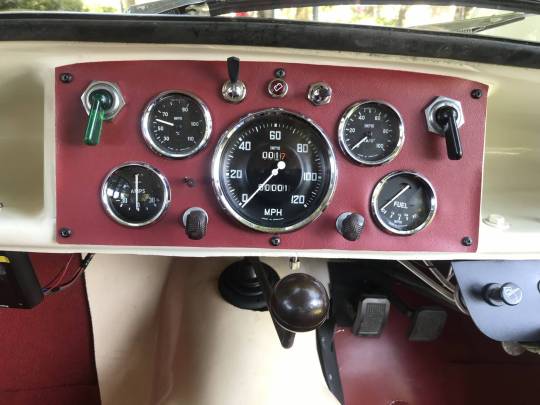


Rochdale GT
Rochdale Motor Panels & Engineering Ltd started in 1948 as panel beaters before turning to the manufacture of aluminium bodies for competition cars and then glassfibre bodyshells for the specials-building industry. By 1954 Rochdale was offering its MkIV glassfibre body, intended for the pre-war Austin Seven chassis. With the latter's availability declining, Rochdale offered the more extensive 'ST' kit for the Ford Ten/Popular chassis. The 'ST' was an open design lacking torsional stiffness, and after a few had been made it was superseded by the beautifully proportioned Rochdale 'GT', which according to its maker was 'not a shell to adapt to your Ford but a complete body designed specifically to fit'. Intended for the Ford 8/10hp chassis, the 'GT' became available from 1960 with Rochdale's own frame. One of the most elegant small sports cars of its day, the 'GT' would go on to be Rochdale's best-selling model, with an estimated 1,350-or-so made, of which it is believed fewer than 80 survive. Rochdale abandoned the kit-car side of its business in the early 1970s.
Featuring a lightened semi-spaceframe chassis, built in period using Ford Popular side members, the car is powered by a full-race specification 1½-litre Coventry-Climax FWB engine producing 140bhp. Other specification highlights include an integral roll cage; straight-cut close-ratio gearbox; double-wishbone front suspension; Lotus 11 front discs and magnesium callipers; Austin Metropolitan rear axle with limited-slip differential and five-link location; competition brake linings at the rear; 15" wire wheels shod with Dunlop racing tyres; long-range 'Le Mans' fuel tank; Speedwell gauges; Halda Speedpilot; and Heuer Monte Carlo stopwatch.
36 notes
·
View notes
Text
Space Frame Market Industry Analysis, Size, Share, Growth, Trends, and Forecast 2022-2028
The research reports provide deep insights into the global market revenue, market trends, macro-economic indicators, and governing factors, along with market attractiveness per market segment. The report provides an overview of the growth rate of Space Frame ’ market during the forecast period, i.e., 2022–2030. The report, most importantly, identifies the qualitative impact of various market factors on market segments and geographies. The research segments the market on the basis of product type, application type, technology type, and region. To offer more clarity regarding the industry, the report takes a closer look at the current status of various factors, including but not limited to supply chain management, distribution Trade, channels, supply and demand, and production capability differ across countries.
Get Exclusive Sample Pages of this Report @ https://iconmarketresearch.com/inquiry/sample/IMR1004
Space Frame ’ Market Company Profiles Analysis:
DSI Spaceframes
HINDUSTAN ALCOX LIMITED
Octamec
CST Industries, Inc.
Xuzhou LF Engineering & Construction Co.
Triocon Space Frame Technologies Pvt, Ltd.
Delta Structures, Inc.
USKON Space Frame System Construction Industry and Commerce Co., Inc.
Pillow Sace Frame Ltd.
Gossamer Space Frames
LLC
Lindner Group
HHSS GROUP
Core Metallic Ind. L.L.C
Prisma Metal Industry L.L.C
MERO-TSK International GmbH & Co.
KG
Zhejiang Southeast Space Frame Co., Ltd.
Jiangsu Andy Steel Structure Co., Ltd.
Note – The Covid-19 (coronavirus) pandemic is impacting society and the overall economy across the world. The impact of this pandemic is growing day by day as well as affecting the supply chain. The COVID-19 crisis is creating uncertainty in the stock market, massive slowing of supply chain, falling business confidence, and increasing panic among the customer segments. The overall effect of the pandemic is impacting the production process of several industries. This report on ‘Space Frame ’ Market’ provides the analysis on impact on Covid-19 on various business segments and country markets. The reports also showcase market trends and forecast to 2030, factoring the impact of Covid -19 Situation.
Market Segmentation:
Space Frame Market Size, Share & Trends Analysis Report By Material (Steel, Aluminium, Metal Alloys), By Structure (Single Layer, Double Layer, Triple Layer), By Tubes (Circular Hollow, Rectangular Hollow), By Application (Dome Roof, Skylight, Canopy & Entry Way, Roof, Atrium, Vertical Glazed), Global Industry Insights, Trends, and Forecast, 2021-2028.
For More Discount Details @ https://iconmarketresearch.com/inquiry/discount/IMR1004
Regional Framework
The report provides a detailed overview of the industry including both qualitative and quantitative information. It provides an overview and forecast of the global Space Frame ’ Market based on various segments. It also provides market size and forecast estimates from the year 2022 to 2028 with respect to five major regions. The Space Frame ’ Market by each region is later sub-segmented by respective countries and segments. The report covers the analysis and forecast of 18 countries globally along with the current trend and opportunities prevailing in the region.
Promising Regions & Countries Mentioned in The Space Frame ’ Market Report:
North America
Europe
Asia-Pacific
Latin America
The Middle East & Africa
Note: If you have any special requirements, please let us know and we will offer you the report as you want.
About Us:
Icon Market Research is a one-stop industry research provider of actionable intelligence. Through our syndicated and consulting research services, we help our clients get solutions to their research requirements. We specialise in industries such as Semiconductor and Electronics, Aerospace and Défense, Energy, Automotive and Transportation, Healthcare, Manufacturing and Construction, Media and Technology, Chemicals, and Materials.
Purchase a Copy of this Study @ https://iconmarketresearch.com/inquiry/buying/IMR1004
Major Features of Space Frame ’ Market Report:
Save and reduce time carrying out entry-level research by identifying the growth, size, leading players and segments in the global Space Frame ’ market.
Highlights key business priorities in order to assist companies to realign their business strategies.
The key findings and recommendations highlight crucial progressive industry trends in the global Space Frame ’ market, thereby allowing players across the value chain to develop effective long-term strategies.
Develop/modify business expansion plans by using substantial growth offering developed and emerging markets.
Scrutinize in-depth global market trends and outlook coupled with the factors driving the market, as well as those hindering it.
Enhance the decision-making process by understanding the strategies that underpin commercial interest with respect to client products, segmentation, pricing and distribution.
Contact Us:
If you have any queries about this report or if you would like further information, please contact us:
Contact Person: Gaurav B
E-mail: [email protected]
Phone: (+1) 812 506 4440.
0 notes
Photo

BMW Z8 Roadster - 2001 by Perico001 E52 Bonhams : The Autumn Sale 2020 Estimated : € 140.000 - 180.000 Sold for € 138.000 Autoworld www.autoworld.be Brussels - Belgium September 2020 In recent times many motor manufacturers, particularly those with a significant sporting heritage, have felt the need to reference iconic models from the past when launching their latest. BMW has proved adept at exploiting this 'retro' trend, commencing in 1996 with the Z3 coupé and convertible, the styling of which brilliantly recalled its fabulous '328' sports car of pre-war days. Its next effort along similar lines - the 'Z07' concept car of 1997 - took its inspiration from the post-war Alfred Goetz-designed '507', a luxurious limited-edition roadster. The sensation of the 1997 Tokyo Auto Show, the Z07 was received so enthusiastically that BMW took the decision to press ahead with a production version: the Z8. For the most part the Z8 remained remarkably faithful to the original concept, retaining the 507-like twin-nostril front grille and distinctive front-wing vents. A period-style interior had been one of the Z07's most remarked upon features, and that too made it into the Z8. The Z8's body panelling and spaceframe chassis were fabricated in lightweight and corrosion resistant aluminium, while the 32-valve 4,941cc V8 engine, shared with the M5 saloon, was built by BMW's Motorsport division. With 400bhp on tap, the Z8 raced to 100km/h (62mph) in 4.7 seconds and only the built-in rev limiter stopped it from exceeding 250km/h (155mph). Power reached the run-flat tyres via a Getrag six-speed manual gearbox. Needless to say, the Z8 also came with all the modern appurtenances one would expect of a flagship model: traction control, stability control, front and side air bags, GPS navigation, climate control, and power operation of the seats, steering wheel, and convertible hood all being included in the package. The fact that the Z8 was a low-volume model assembled, for the most part, by hand, enabled BMW to offer customers considerable freedom in personalising their cars. Further enhancing its appeal to collectors, the factory announced that a 50-year stockpile of Z8 parts would be maintained. Despite a (US) launch price of over $128,000, initial demand was so high that a bidding war broke out, with many Z8s selling for well in excess of that figure. By the time production ceased at the end of 2002, 5,703 of these fabulous cars had been built. This particular BMW Z8 was delivered new to Mr Jason Claxton in Grand River, Ontario in January 2001, passing to its next owner - Lorenzo Giordano, a prominent member of the Montreal Mafia - in 2003, by which time it had covered fewer than 20,000 kilometres. In May 2007 Giordano was arrested and spent the next eight years in prison; released in December 2015, he was shot dead in March 2016. The car was put on the market a few weeks later with 24,693 kilometres recorded, and early in 2017 was imported into Luxembourg. A major service was carried out by Garage Ginion in Waterloo when the car arrived in Belgium in March 2017 (at 25,148 kilometres), which included converting the radio to European specification (detailed bills available). The most recent service was undertaken by Garage Bilia-Edmond in Luxembourg in 2019. Since the car's arrival in Luxembourg in 2017, a total of €7,200 has been spent on various works including replacing both front lights, the right taillight, and the left door trim cup holder (October 2017); replacing all the cylinder head coolant hoses (May 2019); and fitting a new battery (June 2020). Invoices for all these works and parts are on file together with those relating to the car's importation into Europe in February 2017. Finished in grey with black leather interior, the latter smelling like new, this beautiful Z8 Roadster is presented in pristine condition, with a spotless engine bay, and is still on its original tyres. The car comes complete with windbreak and cover; canopy cover; original radio; coffee table book; two keys; Motorola/Startac BMW mobile telephone (Canadian specification); tool kit; Carte Grise; and Contrôle Technique. https://flic.kr/p/2jGw4Qj
2 notes
·
View notes
Text
Rolls-Royce Phantom a été dévoilée comme vedette de luxe de la huitième génération.
Le tout nouveau Rolls-Royce Phantom arrive l'année prochaine en promettant confort de conduite et le luxe intérieur d'une qualité sans précédent, ainsi que d'une expérience de conduite grandement améliorée.
Dévoilé à Londres, le Phantom de huitième génération est le deuxième à être construit sous la propriété de BMW et a été complètement remanié et repensé à partir de la base. Il est en développement depuis six ans et est le premier d'une série de tout nouveaux Rolls-Royce construits sur une architecture spatiale en aluminium sur mesure.
En 2019, le Phantom sera suivi par le premier SUV du fabricant de voitures de luxe, le nom de code du projet Cullinan, tandis que les remplacements pour le reste de la gamme seront construits sur les mêmes fondements que dans le cadre de l'autonomie toujours plus grande que Rolls reçoit de BMW.
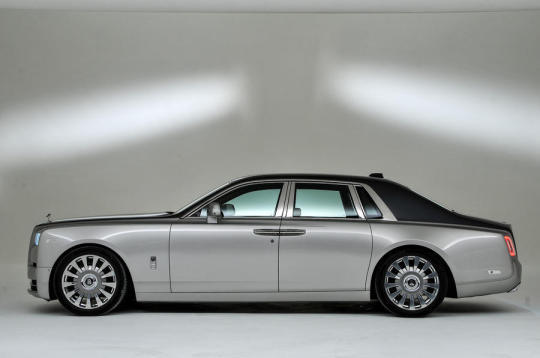
C'est le fantôme qui vient en premier pour la nouvelle ère de Rolls, avec le patron de l'entreprise Torsten Müller-Ötvös appelant le saloon fourdoor "le summum" de Rolls-Royce, l'expression ultime de la marque Rolls-Royce et le haut de gamme, en dépit de la croissance popularité des vus.
«Nous commençons à partir du sommet, qui n'est jamais différent, dit-il. "La première tâche est d'obtenir cette voiture parfaite, puis Cullinan, puis les futurs modèles ainsi."
Le chef de l'ingénierie de Rolls Philip Koehn a déclaré que la nouvelle architecture, appelée architecture de luxe, et la technologie à l'intérieur contribue à créer un «mélange sans précédent» de confort de conduite et de stabilité. La puissance provient d'un moteur V12 bi-turbocompresseur de 6,75 litres, tandis que la conception de la voiture est l'une des «élégance sans effort», selon le patron de style Giles Taylor.

Le tout nouveau Spaceframe en aluminium utilisé par le nouveau Phantom entraîne une augmentation significative de la rigidité de 30% par rapport à celle de la voiture précédente. Rolls-Royce dit que le corps est le plus raide dans la production, et il a exigé un investissement énorme dans la nouvelle technologie pour le rivetage et le soudage par points afin qu'il le construis. L'architecture est celle qui est sur mesure à Rolls et n'a pas de contenu BMW.
L'architecture est également beaucoup plus légère que celle de la voiture sortante, bien que le poids à vide du fantôme augmente de 2550kg à 2625kg en raison de la grande quantité de nouvelle technologie ajoutée à la quatre portes.
Il y a de nouveaux modèles d'essieu avant et arrière et une suspension pneumatique avec un voyage grandement amélioré à chaque coin. Double wishbones sont utilisés à l'avant, avec un essieu Multilink à l'arrière. Koehn a déclaré que le "Magic Carpet" Ride "a été pris au niveau suivant" grâce à ces nouveaux designs et le plus rigide corps en blanc.
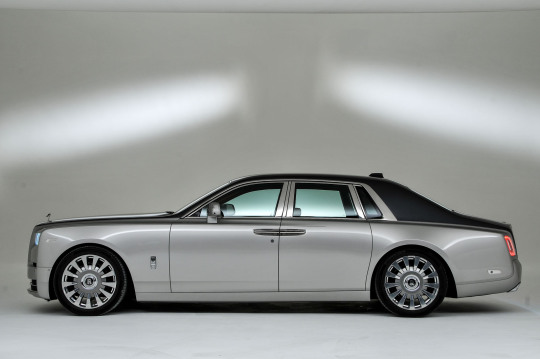
Cependant, Koehn a promis que la qualité de conduite améliorée n'a pas été atteint au détriment de la manutention, qui est un domaine clé Rolls voulait améliorer sur le nouveau Phantom. À cette fin, une nouvelle architecture électrique 48V a été installée, à côté de la technologie des châssis, y compris les barres stabilisatrices actives pour arrêter le roulis et la direction à quatre roues pour améliorer la stabilité et l'agilité et réduire le cercle tournant.
«Cette technologie ajoute à la fois stabilité et confort de conduite pour un mélange sans précédent», a déclaré Koehn, ajoutant que le fantôme était maintenant «gratifiant derrière le volant ainsi que dans l'arrière». Un nouveau composé de pneu plus doux de continental, complet avec son propre deadening, a été fait pour le Phantom 21 en avant et 22IN roues arrière pour compléter son arsenal dynamique.
Sous le capot est une nouvelle version de Rolls-Royces' 6,75-litre V12, qui a l'ajout de deux turbocompresseurs pour la nouvelle voiture. Les pistons, le système de refroidissement, le vilebrequin et le logiciel de gestion de moteur sont également nouveaux dans un moteur que Koehn décrit comme produisant la «Poussée pure».

Le V12 produit 563bhp à 5000rpm, mais son chiffre de couple de 664lb ft est plus significatif, avec un couple complet disponible à partir de seulement 1800rpm. Koehn dit en poussant le couple bas de gamme "au maximum" a été un élément clé du Brief pour le nouveau moteur. Le moteur pourrait produire encore plus de couple, mais Koehn dit que ce "ne serait pas approprié"
Vous pouvez aussi accédé dans un autre site concernant par la poste radio voiture
Le moteur conduit les roues arrières du Phantom à travers une boîte automatique à huit vitesses. Müller-Ötvös a déclaré qu'un V12 était un élément clé de l'appel du fantôme et qu'il «ne pouvait pas être un V8».
Le Phantom peut atteindre 62mph de repos en 5.3 sec et frapper une vitesse de pointe limitée à 155mph. Il pourrait aller plus vite, a déclaré Koehn, mais encore une fois ce "ne serait pas approprié". La stabilité est beaucoup améliorée au-dessus de 100 mph dans le nouveau Phantom par rapport à la vieille voiture, a ajouté Koehn.

Le Phantom est 8mm plus haut qu'avant, à 1646mm, 29mm plus large, à 2018mm, et 77mm plus court, à 5762mm de longueur, avec un empattement qui est 19MM plus court qu'avant, à 3552mm, bien qu'une version avec un empattement plus long de 200mm sera également offerte. L'espace intérieur est resté à égalité avec celui de la voiture actuelle, sauf pour la marge, qui a été augmentée.
L'équipe de conception de Taylor a commencé à travailler sur le projet il y a six ans, en dépassant six de son équipe de conception du siège de Rolls-Royce Goodwood à Londres. «Je leur ai donné la solitude créative pendant trois mois, verrouillé les portes et leur ai dit d'être inspirés par Londres», a déclaré Taylor.
1 note
·
View note
Text
Latest Renewable Energy News update & Conventional | Energetica India Magaziner

German EV maker Next.e.GO Mobile Opens its First Brand Store
Following the successful start of production and launch of nation-wide sales, Next.e.GO Mobile SE, the independent German EV manufacturer, has begun opening its Brand Stores across Europe with first stop in Dusseldorf, the capital of Germany's most populous state.
Inaugurated on the 4th of September with the presence of media and guests just ahead of IAA 2021, the first Brand Store is located at the iconic Schadow-Arkaden by the Dusseldorf's Konigsallee, one of Europe's most visited fashion destinations.
In the brand stores, visitors can experience the vehicles personally up close and get acquainted with e.GO's disruptive production technology, unique design elements and its smart features. Customers could also do test drive and order the vehicle directly at the Brand Store.
The company is accelerating the opening of its new brand stores in other cities with Hamburg, Munich, Milan, Athens and Dubai on the way.
Alongside the start of company's global campaign "The Time Is Now", the opening of the first brand store marks another important milestone in e.GO's journey to accelerate the much-needed transformation in the urban e-mobility by offering a sustainable, durable and affordable electric car that is also unique in many aspects.
"The Time is Now reflects our profound conviction of the urgency for a collective action as well as the need for individual responsibility to combat climate change. We ought to challenge the old habits and limitless consumption, to rethink mobility with enhanced utilization and circular economy being front and center. Our children only have one planet to live on!" said Ali Vezvaei, Chairman of the Board at Next.e.GO Mobile SE.
Affordability, ease of use and life cycle sustainability are key to driving the adoption of electro mobility in the ever growing urban environment. And e.GO offers them all. The robust aluminium spaceframe and the highly durable polymeric outer body give the e.GO Life a longer life cycle and lower total cost of ownership.
The smart battery swap feature, first of its kind for an urban electric car, provides a different user experience and peace of mind while enhancing the ecological footprint of e.GO compared to many other choices in the market.
Get the latest news about renewable energy & solar energy, views & updates from everywhere in India on Energetica. Covering latest Industry information on Indian Solar, Wind, Hydro, EV & other Conventional Power News, Views, Opinion of the think-tankers.
0 notes
Text

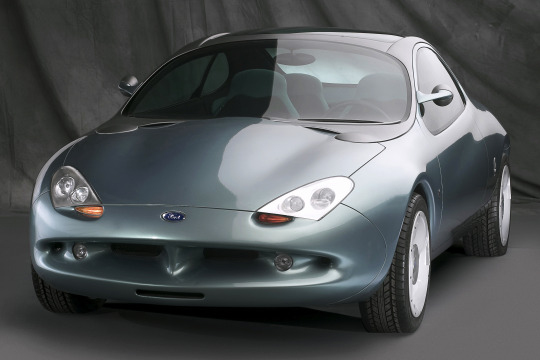

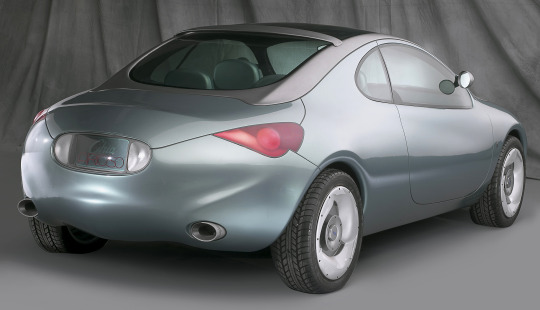
Ford Arioso, 1994, by Ghia. A coupé concept based on the first generation Ford Mondeo/Contour platform with a 2.6 litre V6 engine. Ghia proposed making its aluminium space frame part of the design, taking a structural part of the chassis and using it, unadorned, as a design element.
#Ford#Ford Arioso#Ghia#concept#design study#aluminium spaceframe#aluminium#prototype#Ford Mondeo#V6#1994#1990s
172 notes
·
View notes
Photo

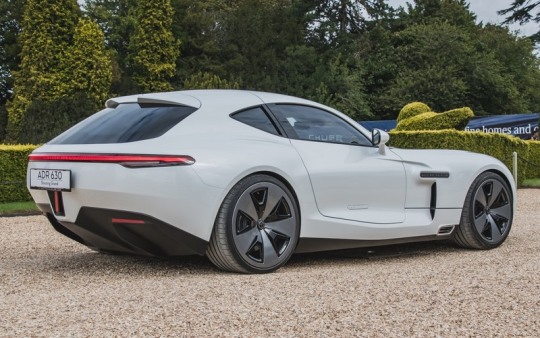

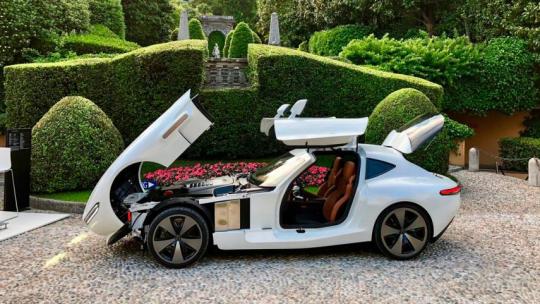

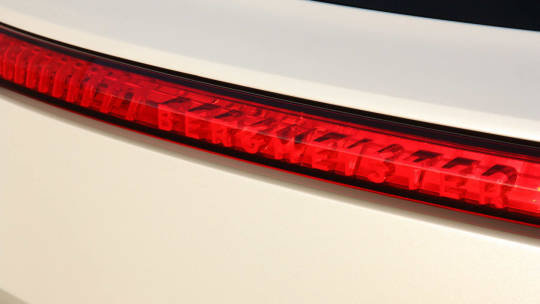
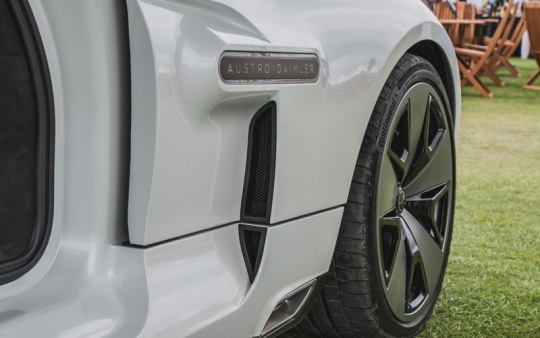



Austro Daimler Bergmeister ADR 630
The name Austro Daimler is probably only known by few motorists. What may sound a bit like an Austrian import company for vehicles of Daimler-Benz was once an independent manufacturer of sporty luxury automobiles and also very successful in motorsports. After an interruption of the production caused by the war, Austro-Daimler began manufacturing cars again in 1920. At that time, a certain Ferdinand Porsche worked in the development department, who was also responsible for the brand’s first racing car, the ADS-R, which won a total of 43 races. In 1931 their last cars were built and in 1935 the company was deleted from the commercial register. It wasn’t until 84 years later that the company was revived with a new automobile to bear the traditional name.
The result is a sports car with classic proportions. A long bonnet is followed by a sporty, short interior and and equally tightly cut rear. The front view is characterised by a dominant radiator grille and narrow headlight units extending into the fenders. What is striking is the considerable width of 2.08 meters, which makes the new Austro Daimler appear very massive. As with the Jaguar E-Type, the complete front opens forward as one bonnet piece. Gullwing doors in the style of the Mercedes-Benz 300 SL give access to the interior, while the very round rear has a large tailgate with narrow lights below, drawn around the corners as continuous strip with integrated ‘Bergmeister’ lettering. This might be the reason for the name suffix ‘Shooting’, but the new Austrian car is not a classic Shooting Brake. If you enter the Bergmeister through the hinged doors, you will notice a modern interior with clear lines, which contrasts in its design with the classic quotes from the body. Driver and front passenger sit on comfortable sports seats, but are separated by a dominant strut above the center console, which grows quite high out of the dashboard. Those who would have expected just as classic round instruments when reviving a classic brand will be disappointed. In front of the driver appears a screen, which is probably unavoidable nowadays. It is operated via a controller mounted on the center console.
While the exterior design deliberately shows more classic features and overall looks harmonious, the technical side of the Bergmeister ADR 630 Shooting Grand is rather progressive and modern. The body is based on an aluminium spaceframe and thus provides a relatively moderate empty weight of 1,650 kilograms. In addition to the weight, the hybrid drivetrain consists of an inline six-cylinder turbo engine supplied by Mercedes-AMG, which works in cooperation with a total of three electric motors, provides very impressive driving performance. The developers claim a system output of 1,214 hp and a maximum torque of 1,660 newtonmeters. This is expected to result in an acceleration time of 2.5 seconds to 100 kph and a topspeed of 330 kph. A 55 kWh lithium-ion battery installed in front of the rear axle provides 250 kilometers of purely electric range, while the total range should be just under 1,000 kilometers.
32 notes
·
View notes
Text
Space Frame Market is likely to reach a valuation of over US$ 1,800 Mn by the end of 2028
The research reports provide deep insights into the global market revenue, market trends, macro-economic indicators, and governing factors, along with market attractiveness per market segment. The report provides an overview of the growth rate of Space Frame market during the forecast period, i.e., 2022–2030. The report, most importantly, identifies the qualitative impact of various market factors on market segments and geographies. The research segments the market on the basis of product type, application type, technology type, and region. To offer more clarity regarding the industry, the report takes a closer look at the current status of various factors, including but not limited to supply chain management, distribution Trade, channels, supply and demand, and production capability differ across countries.
Get Exclusive Sample Pages of this Report @ https://iconmarketresearch.com/inquiry/sample/IMR1004
Space Frame Market Company Profiles Analysis:
DSI Spaceframes
HINDUSTAN ALCOX LIMITED
Octamec
CST Industries, Inc.
Xuzhou LF Engineering & Construction Co.
Triocon Space Frame Technologies Pvt, Ltd.
Delta Structures, Inc.
USKON Space Frame System Construction Industry and Commerce Co., Inc.
Pillow Space Frame Ltd.
Gossamer Space Frames
LLC
Lindner Group
HHSS GROUP
Core Metallic Ind. L.L.C
Prisma Metal Industry L.L.C
Note – The Covid-19 (coronavirus) pandemic is impacting society and the overall economy across the world. The impact of this pandemic is growing day by day as well as affecting the supply chain. The COVID-19 crisis is creating uncertainty in the stock market, massive slowing of supply chain, falling business confidence, and increasing panic among the customer segments. The overall effect of the pandemic is impacting the production process of several industries. This report on ‘Space Frame Market’ provides the analysis on impact on Covid-19 on various business segments and country markets. The reports also showcase market trends and forecast to 2030, factoring the impact of Covid -19 Situation.
Market Segmentation:
Space Frame Market Size, Share & Trends Analysis Report By Material (Steel, Aluminium, Metal Alloys), By Structure (Single Layer, Double Layer, Triple Layer), By Tubes (Circular Hollow, Rectangular Hollow), By Application (Dome Roof, Skylight, Canopy & Entry Way, Roof, Atrium, Vertical Glazed), Global Industry Insights, Trends, and Forecast, 2021-2028.
For More Discount Details @ https://iconmarketresearch.com/inquiry/discount/IMR1004
Regional Framework
The report provides a detailed overview of the industry including both qualitative and quantitative information. It provides an overview and forecast of the global Space Frame Market based on various segments. It also provides market size and forecast estimates from the year 2022 to 2028 with respect to five major regions. The Space Frame Market by each region is later sub-segmented by respective countries and segments. The report covers the analysis and forecast of 18 countries globally along with the current trend and opportunities prevailing in the region.
Promising Regions & Countries Mentioned in The Space Frame Market Report:
North America
Europe
Asia-Pacific
Latin America
The Middle East & Africa
Major Features of Space Frame Market Report:
Save and reduce time carrying out entry-level research by identifying the growth, size, leading players and segments in the global Space Frame market.
Highlights key business priorities in order to assist companies to realign their business strategies.
The key findings and recommendations highlight crucial progressive industry trends in the global Space Frame market, thereby allowing players across the value chain to develop effective long-term strategies.
Develop/modify business expansion plans by using substantial growth offering developed and emerging markets.
Scrutinize in-depth global market trends and outlook coupled with the factors driving the market, as well as those hindering it.
Enhance the decision-making process by understanding the strategies that underpin commercial interest with respect to client products, segmentation, pricing and distribution.
Purchase a Copy of this Study @ https://iconmarketresearch.com/inquiry/buying/IMR1004
Note: If you have any special requirements, please let us know and we will offer you the report as you want.
About Us:
Icon Market Research is a one-stop industry research provider of actionable intelligence. Through our syndicated and consulting research services, we help our clients get solutions to their research requirements. We specialise in industries such as Semiconductor and Electronics, Aerospace and Défense, Energy, Automotive and Transportation, Healthcare, Manufacturing and Construction, Media and Technology, Chemicals, and Materials.
Contact Us:
If you have any queries about this report or if you would like further information, please contact us:
Contact Person: Gaurav B
E-mail: [email protected]
Phone: (+1) 812 506 4440.
0 notes
Photo

Phantom VII
When Rolls-Royce Motor Cars unveiled the Rolls-Royce Phantom in 2003, it heralded a new age for the marque, proudly reclaiming its position at the forefront of automotive design and engineering.
Working to the maxim of company founder Sir Henry Royce - "Strive for perfection in everything you do" - the design and engineering teams spent four years developing this breakthrough model. Using the most advanced technology, whilst drawing inspiration from the company's rich heritage, their goal was clearcut: to develop a 21st century Rolls-Royce that would be truly worthy of the famous Spirit of Ecstasy.
The result was the Rolls-Royce Phantom. Built at a new, state-of-the-art manufacturing plant in Goodwood, this flagship Rolls-Royce ensured the company's renaissance by combining the spirit of its illustrious forebears with ground-breaking technology and visionary engineering techniques.
Design
Creating a strong identity for the Rolls-Royce Phantom was essential, says chief designer Ian Cameron: "Our priority was to create a car that was obviously a Rolls-Royce from any angle, even if the Spirit of Ecstasy or the famous grille could not be seen."
To identify this core essence, the design team immersed themselves in the brand and its history. This revealed classic styling cues such as a long bonnet, wide C-pillars and discrete windows, all of which were incorporated into the Rolls-Royce Phantom's design. Its powerful, upright stance and dynamic, rising profile are also unmistakably Rolls-Royce. Yet advanced features such as a unique aluminium spaceframe and pioneering direct petrol-injection engine leave no doubt that this is a car at the cutting edge of technology.
Exactly the same can be said of the unique rear coach doors, which stand as testament to the sophisticated engineering to be found throughout the Rolls-Royce Phantom. Hinged at the back, they allow rear passengers to enter and exit the car gracefully, and can be closed at the press of a button.
The interior of the Rolls-Royce Phantom is clean and contemporary, the simplicity of the design belying the technology beneath. Any controls not needed for everyday driving are kept out of sight until required. The multi-media screen, for example, is hidden behind a revolving panel in the centre of the dashboard that normally displays a round, analogue clock. This apparent simplicity extends to the operation of the controls as well: even the highly sophisticated audio system can be operated using just one button.
A hallmark of Rolls-Royce, and of the Phantom in particular, is the way in which the most advanced technology combines with traditional hand-craftsmanship to produce something extraordinary. The switches for the power windows and audio system are beautifully crafted 'violin keys', while the chrome air vents are operated by traditional 'organ stops'. Together with the use of the finest leather and wood veneers, it is this fusion of high technology and hand-craftsmanship that gives the interior its unique and luxurious feel.
0 notes
Photo

Mercedes 300 SL Roadster - 1959 by Perico001 W198-II Estimated : CHF 770.000 - 1.100.000 Sold for CHF 776.250 - € 705.810 The Bonmont Sale Collectors' Motor Cars - Bonhams Golf & Country Club de Bonmont Chéserex Switzerland - Suisse - Schweiz September 2019 Created to spearhead Mercedes-Benz's return to competition in the post-war era, the 300 SL debuted in the 1952 Mille Miglia, finishing 2nd and 4th overall. Wins in the Carrera Pan-Americana and at Le Mans followed, and the 300 SL was on its way to becoming part of motor sporting legend. Max Hoffman, the Mercedes-Benz importer for North America, believed there would be a market for a road-going version and managed to convince the factory that such a car would be a success. The first racers were open-topped but before the '52 season's end the distinctive 'Gullwing' doored Coupé had appeared. Unusually high sills were a feature of the multi-tubular spaceframe chassis, and while access was not a problem of the open car, the adoption of coupé bodywork required innovative thinking - hence the Gullwing doors. Launched in 1954, the production 300 SL retained the spaceframe chassis of the racer and was powered by a 2,996cc, overhead-camshaft, inline six canted at 45 degrees to achieve a lower, more aerodynamic bonnet line. Using innovative direct fuel injection, this state-of-the-art power unit produced 215bhp at 5,800rpm. A four-speed gearbox transmitted power to the hypoid bevel rear axle. Suspension was independent all round by wishbones and coil springs at the front, with swing axles and coil springs at the rear. Tested by the highly respected American magazine Road & Track in 1955, the 300 SL accelerated from 0-60mph in 7.4 seconds, going on to achieve a top speed of 140mph: outstanding figures for its day. It was, arguably, the world's first supercar. Half expecting the long-awaited 300 SL to provide an anti-climax, R&T were delighted to find the new car, "far beyond our wildest expectations. In fact, we can state unequivocally that in our opinion the 300 SL coupé is the ultimate in an all-round sportscar. It combines more desirable features in one streamlined package than we ever imagined or hoped would be possible. Performance? It accelerates from a dead start to 100mph in just over 17 seconds. Dual purpose? A production model 300 SL can make a very acceptable showing in any type of sportscar competition. Yet the car is extremely tractable and easy to drive in traffic. Comfort? The fully enclosed 300 SL is the most comfortable (and safe) high-speed 'cross-country' car built today." Its racing parentage notwithstanding, the 300 SL was and remains a thoroughly practical automobile, as civilised in city driving as it is exhilarating on the highway. Clearly the 300 SL Coupé would be a hard act to follow yet the Roadster version, introduced just three years later, succeeded in bettering its closed cousin's already exemplary road manners. Built with conventional doors, the 300 SL Roadster was first exhibited at the Geneva Salon in May 1957 and was an immediate hit with the 1950s 'Jet Set' of royalty, actors, and socialites. The production of an open 300 SL involved altering the cockpit area, where the spaceframe was redesigned to permit lower sills for improved access. At the same time the rear suspension was changed to incorporate low-pivot swing axles. Disc brakes were standardised from March 1961, while towards the end of production a small batch of Roadsters was completed with an aluminium cylinder block. The Roadster's neutral steering characteristics received fulsome praise from Road & Track in its 1958 road test. "With the low-pivot rear suspension and more adhesive tyres, the car handles beautifully under all conditions. This is a tremendous improvement over the hardtop models, which had a tendency to oversteer rather violently if pressed too hard." A 0-60mph time of 7.0 seconds and a top speed of 130mph were recorded, making the 300 SL Roadster one of the fastest convertibles of its time. R&T concluded: "There is no doubt that the 300 SL roadster is a truly great dual-purpose sports car, equally at home in traffic and the open road, or on the track", words that remain equally true today. The 300 SL Roadster sold well for a car that cost more than a Ferrari 250 GT California Spyder and would out-live the 300 SL Coupé, which ceased production in 1957, by several years. Roadster production ceased in 1963 after 1,858 cars had been built, and today the model is both rare and highly sought after. The current vendor purchased this 300 SL Roadster in 1988 at the Classic Mobil Fair, held at the Olympiahalle, Munich. Since then the car has required no work other than the removal of a dent in the right front wing. Its engine running smoothly, this example has a delightful overall patina of age and, unusually, still retains its original paintwork. Finished in beige with red leather interior, the car is offered with German Fahrzeugbrief and a copy of its factory data card. A beautiful example of the iconic 300 SL in Roadster form, this is a highly desirable motor car that would make an exhilarating yet extremely practical touring companion. Indeed, there cannot be many better ways of travelling to a classic event, taking part and driving home. https://flic.kr/p/2hPaJ8o
1 note
·
View note